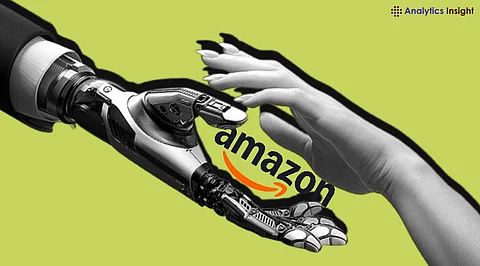

Amazon's AI robots are revolutionizing the workforce, seamlessly integrating technology with human roles to create a more dynamic and efficient work environment. As automation transforms traditional jobs, new opportunities emerge, requiring workers to adapt and upskill.
Amazon, the world leader in technology and logistics, has adopted artificial intelligence (AI) and robotics to revolutionize its operations. This change poses questions about the future of human employment. Rather than merely displacing employees, Amazon's AI-based innovations redefine jobs, integrating technology with human capabilities to create new possibilities.
This article examines how Amazon redefines human employment in the age of AI robots, identifying significant changes and their effects on the workforce.
Amazon's warehouses demonstrate the strength of AI robots. Robotic arms and autonomous carts are used to perform repetitive tasks like sorting packages and moving stock. These machines work with precision, accelerating processes that were previously done by hand.
Through automating mundane work, AI robots liberate employees from labor-intensive tasks, enabling attention to more complex tasks. This change represents a big step in the process of redefining the boundaries of human work in the company.
Automation does not destroy jobs but redefines them. Amazon created new jobs that did not exist a decade ago, such as robot coordinators and AI system technicians. The jobs require workers to watch over, repair, and fine-tune robotic systems. The employees in these positions work hand in hand with machines, ensuring operations are smooth.
Additionally, Amazon invests in training programs that assist employees in acquiring skills like data analysis and machine maintenance for emerging roles. This is an indication of a commitment to coupling human ability with advanced technology.
Amazon's robotic AI enhances efficiency by working in tandem with human beings. In the fulfillment warehouses, for example, robots relocate shelves to employees, conserving walking time. This synergy helps employees focus on tasks like quality control and customer service. Synergy between machines and humans enhances the flow of work, which allows Amazon to maintain pace in the face of higher demand.
To support its AI-based business, Amazon emphasizes employee upskilling. Programs such as Amazon Career Choice provide training in areas of software development and robotics. These allow employees to be retrained into higher-skilled positions that can match the company's technological progress.
Access to education by Amazon ensures that workers are kept competitive in an evolving job market. This emphasis on learning promotes a culture of flexibility, enabling employees to succeed over the long term within an AI-driven workplace.
Others criticize that AI robots will replace employees, especially in low-skilled jobs. Automation may reduce the need for certain manual labor, but Amazon responds that it creates new opportunities. Amazon's scale gives it the capacity to integrate workers into new roles, like AI system administration or customer-facing duties.
Figures from Amazon's 2023 reports indicate a net increase in jobs, with thousands of new positions attributed to technology and logistics. This implies that, instead of replacing humans, AI robots redirect the type of work towards more skilled and creative jobs.
Amazon's use of AI robots sets a trend among other sectors. Retail, manufacturing, and logistics companies look up to Amazon's example, employing the same technology to remain relevant. The trend is fueled by the demand for workers with AI and robotics experience in every sector. Nevertheless, the trend puts pressure on the large-scale training of the labor force to avert skills shortages.
Though the benefits, there are challenges. The pace of automation requires constant adaptation, which wears down workers. Ethical issues, such as fair compensation for tech workers, also arise. Amazon faces criticism for working conditions, and changes in employees' lives have become imperative.
Open policies and constant consultation with workers counter the challenges, ensuring AI innovations function following human welfare. Trading off efficiency with ethical responsibilities remains vital as Amazon perpetuates this revolution.
Amazon's use of AI robots redesigns human labor by creating new jobs, boosting productivity, and prioritizing upskilling. While concerns over job displacement and ethics exist, the company's focus on human-machine partnership offers a positive vision for the future.
By combining technology and human capability, Amazon produces a workforce that thrives in the era of AI, offering a model for businesses worldwide. Amazon's work transformation shows a broader shift, where human potential and innovation converge to reshape work.
